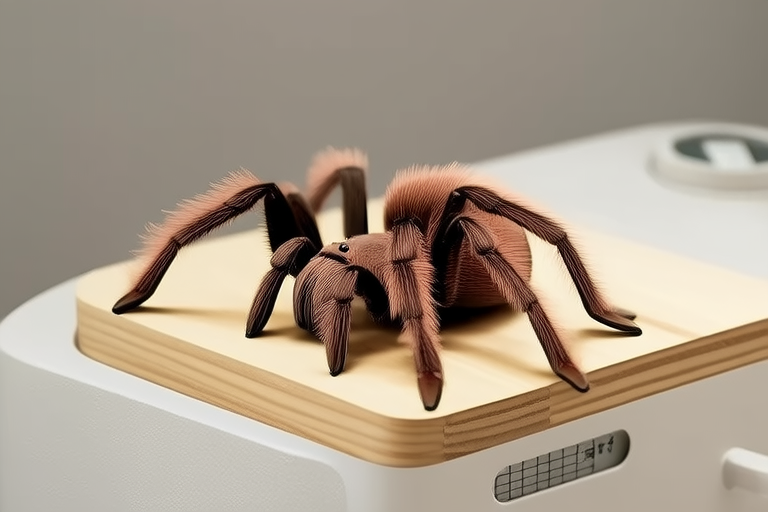Debunking Common Myths About Keeping Chilean Rose Tarantulas As Pets
The Chilean Rose Tarantula (Grammostola rosea) is one of the most popular tarantulas among pet enthusiasts. Despite its popularity, there are numerous misconceptions surrounding its care and behavior. This article aims to dispel these myths with scientific facts, expert advice, and practical experiences.
Myth 1: Chilean Rose Tarantulas Are Easy to Handle
Fact: While G. rosea is generally docile, handling them is not advisable. Their delicate exoskeletons can easily be damaged, and they possess urticating hairs that, when released, can cause skin irritation in humans. Handling should be limited to necessary maintenance tasks, such as cleaning their enclosure.
Expert Advice: Always use tweezers or a soft brush to remove debris from their enclosure instead of directly handling the tarantula.
Practical Experience: Many novice owners have found out the hard way that handling can stress the tarantula and lead to health issues. It’s best to admire them from a distance.
Myth 2: Any Enclosure Will Do
Fact: Proper habitat setup is crucial for the well-being of your Chilean Rose Tarantula. They require a terrarium with at least 3x the leg span in width and length, and twice the leg span in height. The substrate should be at least 4 inches deep, allowing for burrowing.
Expert Advice: Use coconut fiber or reptile bark as substrate. Avoid pine or cedar shavings, which can be harmful due to their aromatic oils.
Practical Experience: A poorly set-up enclosure can lead to stress and health problems. Ensure there are hiding spots and a water dish accessible at all times.
Myth 3: Water Is Only Needed for Drinking
Fact: While tarantulas drink water, maintaining humidity levels is equally important. Humidity should be kept between 60-70% to prevent dehydration and respiratory issues.
Expert Advice: Mist the enclosure regularly to maintain humidity. Place a shallow water dish in the corner of the enclosure.
Practical Experience: Some owners have noticed their tarantulas’ molting process improves significantly with proper humidity control.
Myth 4: Feeding Is Simple; Just Give Them Insects
Fact: While insects are the primary diet, variety is key. Feed them crickets, mealworms, and dubia roaches. Ensure the prey items are no larger than half the tarantula’s body width.
Expert Advice: Gut-load the insects with nutritious foods before feeding to ensure your tarantula receives adequate nutrients.
Practical Experience: Overfeeding can lead to obesity, while underfeeding can cause malnutrition. A balanced diet is essential for longevity.
Myth 5: They Can Be Fed Daily
Fact: Adult tarantulas eat less frequently, usually once every week or two. Younger tarantulas may need more frequent feedings.
Expert Advice: Observe your tarantula’s eating habits and adjust accordingly. Overfeeding can lead to health issues.
Practical Experience: Many owners have learned to trust their tarantula’s appetite rather than adhering to a strict schedule.
Myth 6: Temperature Doesn’t Matter
Fact: Maintaining the right temperature is vital for their metabolism and overall health. The ideal temperature range is 78-82°F (25-28°C) during the day, dropping slightly at night.
Expert Advice: Use a thermometer to monitor temperature. A heat mat placed underneath one side of the enclosure can help regulate temperature.
Practical Experience: Owners have noted that tarantulas become sluggish and less active outside this temperature range.
Myth 7: Molting Is a Quick Process
Fact: Molting can take several days to weeks, during which the tarantula is vulnerable. Provide a humid environment and avoid disturbing the tarantula.
Expert Advice: Increase humidity by misting the enclosure more frequently. Ensure the substrate is damp but not overly wet.
Practical Experience: Observing a tarantula molt can be fascinating but requires patience and minimal disturbance.
Myth 8: Tarantulas Are Nocturnal Creatures
Fact: While they are primarily nocturnal, they can be observed during the day if conditions are right. They are more active in the evening, but some activity may occur during daylight hours.
Expert Advice: Maintain a consistent lighting schedule to help establish a routine. Use a low-wattage red bulb if you want to observe them without disrupting their natural cycle.
Practical Experience: Some owners have found their tarantulas more active during the day when the environment mimics their natural habitat.
Myth 9: Tarantulas Don’t Need Social Interaction
Fact: While tarantulas are solitary creatures, they can benefit from gentle interaction. Regular observation can help you understand their behavior and needs better.
Expert Advice: Spend time near their enclosure without handling them. This can help reduce stress and improve your bond.
Practical Experience: Many owners have reported that their tarantulas become more relaxed and predictable with regular, non-invasive interaction.
Myth 10: All Tarantulas Are Aggressive
Fact: While some species are more aggressive, G. rosea is generally calm and docile. They are not prone to biting unless severely provoked.
Expert Advice: Respect their space and avoid sudden movements. If you need to handle them for any reason, always use protective gear.
Practical Experience: Many owners have found that with proper care and respect, Chilean Rose Tarantulas make excellent pets.
Conclusion
By addressing these common myths, we hope to provide a clearer understanding of what it takes to keep a Chilean Rose Tarantula as a pet. Remember, responsible ownership involves research, preparation, and ongoing care. With the right knowledge and dedication, these fascinating arachnids can be rewarding companions.
